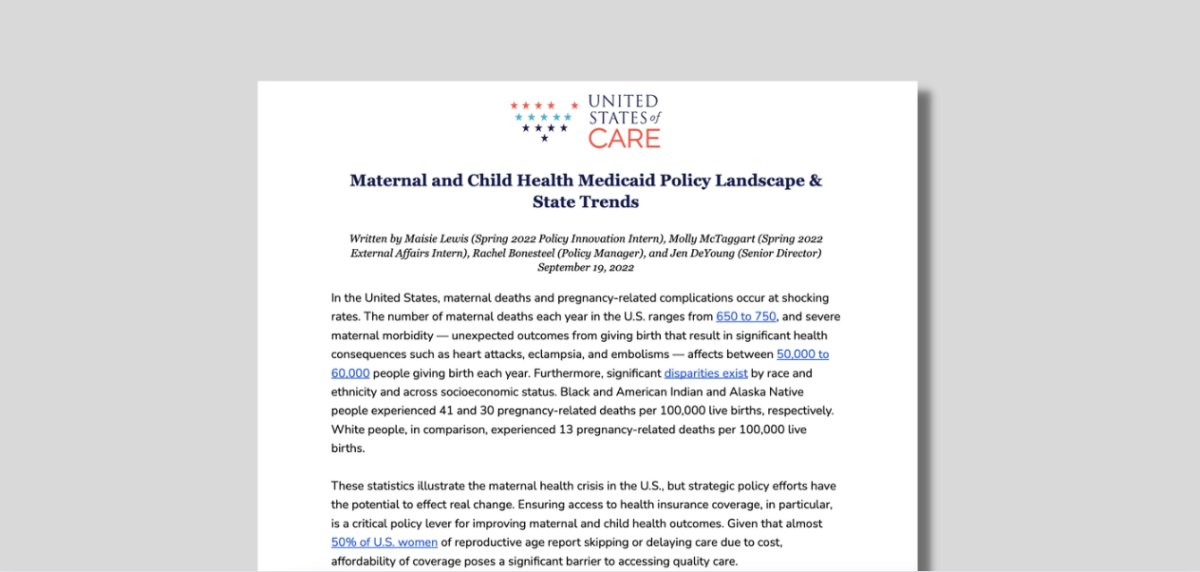News & Updates, Research, Resources
Maternal and Child Health Medicaid Policy Landscape & State Trends

In the United States, maternal deaths and pregnancy-related complications occur at shocking rates. The number of maternal deaths each year in the U.S. ranges from 650 to 750, and severe maternal morbidity — unexpected outcomes from giving birth that result in significant health consequences such as heart attacks, eclampsia, and embolisms — affects between 50,000 to 60,000 people giving birth each year. Furthermore, significant disparities exist by race and ethnicity and across socioeconomic status. Black and American Indian and Alaska Native people experienced 41 and 30 pregnancy-related deaths per 100,000 live births, respectively. White people, in comparison, experienced 13 pregnancy-related deaths per 100,000 live births.
In the below brief, USofCare presents our research on maternal health policy within Medicaid programs across all 50 states and DC; we focused specifically on Medicaid because it covers 45% of all births in the U.S.–playing such an important role in providing care to pregnant people. The brief also contains our findings, outlines key trends and critical gaps, and highlights innovative models. We focus on four key policy areas within Medicaid: doula reimbursement, midwifery reimbursement and licensure, coverage for freestanding birth centers and home births, and coverage for prenatal and postpartum care, including Medicaid postpartum coverage expansion.